Last updated on June 24th, 2025 at 12:36 pm
Box squats are another great way for regular squats as they help raise awareness of form and methods, making them especially useful for fitness beginners. But it is also recommended for experienced athletes, particularly lifters who want to break the personal squat record or jump off the field.
For some, squats are a necessary evil that you should avoid at all costs. For some, a leg of the day is a milestone in the history of highlights.
What is a Box Squat?
As the name suggests, box squats are different from regular squats because the depth of the squat is determined by how long the “box” is rather than allowing the athlete to cross freely and not knowing when to stop.
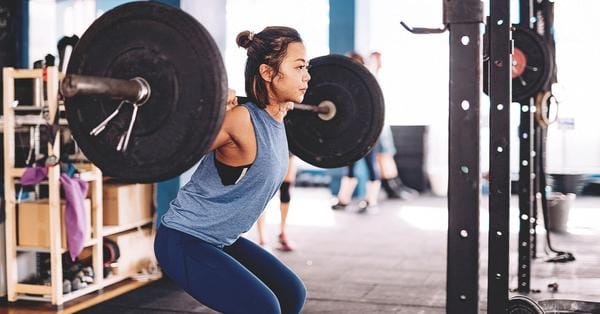
The perfect height, or depth of the squat, is below knee level, but this can vary depending on your Strength and mobility. To do a squat box, one does not need a box. Some lifters prefer to pack the plates to form a column until the height is their preference.
But you can also use a comfortable seat or any other position that is challenging enough and supports you with exercise. Squats are an old and time-tested activity that has gained their place in many ways of gaining stamina.
Regular squats, sometimes called air squats, are of greatest concern when talking about squats. But there is another form of squat that enhances glute gain and amps in strengthening lower body muscles: box squats.
How to Box Squat Properly?
The box squat is considered a movement for hardcore powerlifters who want to get all the progress in their squat. It is a good exercise that any weightlifter can improve the back squat, add muscle to the legs, and adjust to heavy loads.
Best of all, though, it’s easy to do: Put a loaded barbell on your back, squat on the box you’re sitting on to lean, stand up, then squat and lift.
Below, we discuss box squat in detail, covering the squat box process and setting the variability, muscle mass, and benefits they can gain by incorporating this movement into their exercise program.
How to Box Squat On The Bench Using A Barbell?
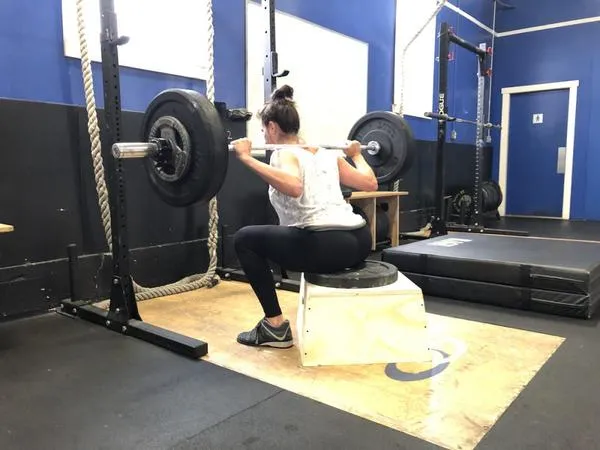
- Stand in a squat rack or power rack with a bar about the middle of the chest length. Position the bench or box at heights that fit your buttocks and quads under the squat. You can choose a low bench depending on your mobility and experience of deep squat/comfort.
- If you choose the right weight, go straight up, tighten your spine, and open the bar on your trapezoids (the muscle that runs around your neck to shoulder, down to the shoulder). Tie your shoulders together, keeping your chest tight. Raise your chest, and place it two or two feet in front of your bench.
- Drive your feet firmly to the ground and press your glutes to set the correct hip position.
- Push your butts back, bend your knees, and then down into the squat, slowly descending to the countdown of three times.
- When your buttocks hit the bench, continue to press your spine and keep the rest of your body as you hold this position for two seconds.
- From there, press your heels to go back, pressing your glutes up.
- It is 1 repetition. Do it 10 times, then rest 30 to 45 seconds before the next set.
- Repeat for 4 sets in total.
How to Perform Sit Down Squats?
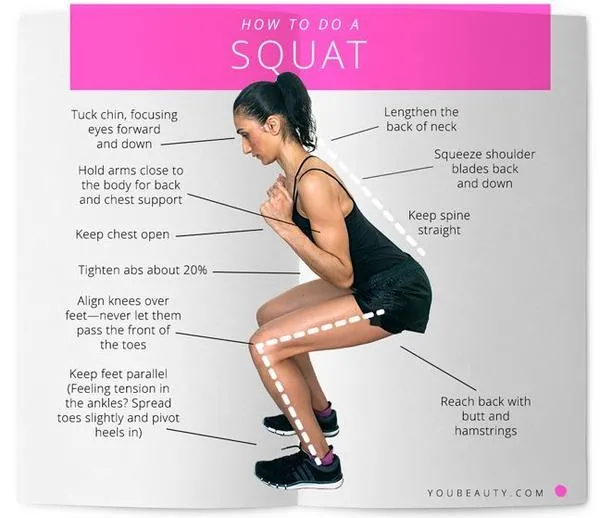
- Stand in front of your seat, looking away from it. Your feet should be shoulder-width apart, with your toes facing forward.
- Keep your spine neutral and have an elevated head and chest. Bend your spine as you bend the knees and lower your hips down and back. You can raise your arms forward to get more balance while lowering yourself.
- Gently tap the chair with your hips, but do not sit down.
- Press the glutes and hamstrings to move your hips up and down, returning to the starting position.
- Try to do three sets with several about ten repetitions.
Benefits of Sit Down Squats
- Seat squats are a great way to build muscle strength in your leg if you are new to performance. The seat provides extra support as you work your glutes, hamstrings, and quads.
- Were you locked up in your chair all day because of work? Make your chair work for you! One study found that adding a few squats to 20 minutes of exercise could increase your metabolism.
- Seat squats can give you the support you need to get a good leg workout, even if you are a fully fit teenager. And they are an effortless alternative to add up a little exercise throughout your workout to help grow your body (and your appetite!).
What are the Front Box Squats?
Box squats are not just about improving your back squat; they can raise your front squat as well. The front box squat follows the same movement pattern as a normal box squat but significantly differ.
The main difference is the function of the rear chain, which you cannot hear with the squat of the front box. Second, the backward movement will not sound like saying. You do the front squat in the box rather than the actual box squat.
So why bother using this variation? If your main focus is on squatting forward or building up your quads, this movement can help you build an explosive power that will increase your performance.
The front box squats benefits include the front squats zone in on the anterior chain — or the front part of your body — to strike the quads and upper back more heavily.
Box Squats VS Regular Squats | Which One is More Effective?
This article compares the training results between box squat vs regular squat, both of which are widely used in all Strengthening muscle mass and fitness training. The sections below will clarify the differences between the two squats and guide Strength, power, and fitness trainers/athletes when deciding which movements are best for training and athletic performance goals.
Regular squat, also called box back squat, is another (if not more) the most well-known and visible barbell movement. It is a basic movement of normal squat body development. In addition, it is used in all Strength sports to improve competitive performance.
Here, a standard back-to-back squat, a variation of the normal back squat (and can be done from the lower back squat area), is mentioned.
The section below separates the three training outcomes that coaches and athletes should consider when deciding which squat movement is best for their effective athletic performance.
Great Power
Both motions effectively increase the maximum force required for depth and other normal operating movements (pulling, carrying, etc.). Strength and stamina athletes can benefit greatly by incorporating box squats into training programs.
Olympic weightlifters, who often get some benefits, including box squats in their system, may find it limited to direct use of the box squat (patterning). It includes the movements such as cleaning, snatching, and jerks (usually, the box squat involves less. straight back angle).
Quadriceps Hypertrophy
Both movements can improve quadriceps strength and muscle hypertrophy. A back squat works the muscle throughout the wide-angle of motion. The box squat can shift the emphasis to a certain width by modifying the level of the box itself.
Which can help address muscle weakness/adherence points in certain stages of squat movement. In general, squatting to parallel and above sets the highest demands on the quadriceps.
Posterior Chain Hypertrophy
Before reading this difference, you should know how the box squat can be used to improve the back chain’s strength and function (hamstrings, glutes, and erectors). By incorporating this into squat training programs, you can increase the ability of the wearer to reduce hamstrings and hip muscles and stay in control of the bottom of the squat.
Additionally, by using a box, you deny the extended reflex (due to using a break under the squat), forcing higher contract requirements on the rear fence (as well as strong quadriceps strength).
General Squat Strength and Hypertrophy
Both boxes, squat and back squat, can build strength and hypertrophy, each in its separate way. You can also perform box squats to raise quadriceps hypertrophy, address the areas of attachment to the squat, and even allow for the development of the back chain (increased hip involvement under the box squat).
The regular squat can also help improve strength. Strength and hypertrophy in squatting movements and is a targeted measure of squat Strength with Strength, stamina, and fitness games. It is recommended that athletes spend most of their time performing a regular squat and use the box squat as an exercise during squat training.
Benefits of the Box Squats
In the section below, we discussed Different types of athletes/goals, each classifying which movements (box squat vs normal squat) would most benefit strengthening muscles and special athletic performance.
1. Strengthen the Hamstrings and Glutes
When you do a regular squat, your gravitational center tends to move forward. But during box squats, your hips will be back in the Box or at the top where you will be sitting.
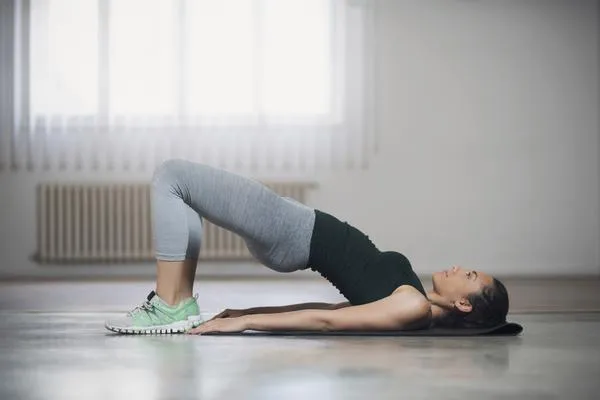
It allows you to sit back continuously and have your shins at a right angle. With regular practice, box squats can bring about three or four times as much power development as other types of squats.
2. You will built-up More Muscles
One may think that the squats are because of your back. But on the contrary, when performed regularly and in the right way, box squats are a complex compound that directs your glutes, hamstrings, quads, calves, and spine.

When you engage more muscles in time, your metabolism will rise and burn calories even at rest. For more exercise, carry weights to beat your upper body muscles simultaneously.
3. They Will Help You Know More about Squat Form and Height
Holding the “right form” is probably one of the most common and pierced sentences used in physical and athletic fitness, and for a good reason! Understanding and maintaining proper form ensures that you join the right muscle groups and reap the benefits of exercise.

Most importantly, you will be capable of performing your movements safely. It is easy to be overwhelmed by the pressure with constant swinging, and many athletes fall over and go back up.
Box squats are good to start because your squat ends at the height of the Box. It helps you find the squat depth right for your level, so you do not overwork yourself by mistake. You also get a record of your progress depending on the length of the Box. You can start with the height of the Box above the thigh and then gradually move to the lower boxes to get a deeper squat.
4. You Can Improve Your Movement
Squat movement is an ideal challenge for some people. Have you ever tried to notice that when you squat, your knees bend or your heels fall off? That’s a lack of mobility. When done properly and regularly, box squats help improve muscle flexibility and range of motion, allowing you to avoid depth over time.
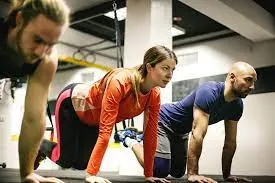
It is important because squatting is not just about exercise, but we do movement even in everyday life. Training for active movement while you are young increases your ability to do it when you are older.
Think of every time you have to get involved with your back to get up from the sitting position! Incorporating box squats into your regular exercise program will help you maintain this type of movement as you grow older.
5. Achieve Your Best
Many experienced athletes who squat on the ground tend to rely on relapses. The latter limits the amount of money they can afford to spend while grinding. Because you have to stay fully fit, you lose any momentum you gained when you went down.
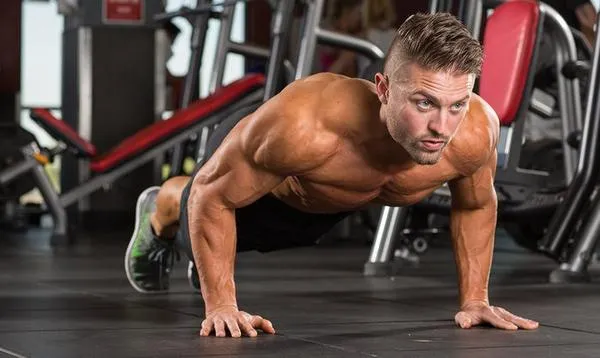
You need to flex all your muscles and use your strength to take a straight line to get back. Box squats are often used for injured people or have severe movement deficits (or both). But try not to make a mistake about it: Any athlete can benefit from box squats.
Try it, and you will probably find that you get all the new emotions and gain a high level of awareness. Over time, you will see the benefits of box squats greatly.
6. Suitable for Injured Athletes
There is a common debate throughout the gym about whether squats hurt your knees or not. The answer is yes and no. A squat will not hurt your knees if done correctly and without the basic problems. If your form is poor or previous injuries in the area, traditional squats may not be yours.

You can use box squats for bad knees. In all movements, wide standing and hinging movements take the pressure off the knees. You’ll notice when you watch someone do a barbell squat that their knees will come forward to allow for a straight bar approach.
When box squats are done correctly, the knee stays piled against the ankle, and the chin stays at an angle of 90 degrees. As a result, the load is removed from the knees to the hips.
Which People Should Perform Box Squats?
Box squatting differs from the more targeted regular squat, but competing and regular squatters alike can still benefit from this great work. Here are some suggestions for you:
Power and Strength Athletes
Powerlifting aims to lift as much weight as possible. As a person becomes stronger, progress begins to slow down. Proponents may encounter problems in certain elevator parts – usually, lower, middle, and upper.
Power lifters can use the Box squat to tighten the upper part or close the outside of the squat. Also, because one can lift weight in a box squat, it helps power lifters to adjust to heavy loads. For particularly strong people, high box squats can help them to take on the yoke easily.
Although completely useless, a weightlifter will not be accustomed to doing box squats. Regular, deep squats translate best to snatching and cleaning and jerking.
Box Squats Weight Recommendations, Sets and Reps
Below, there are three main training objectives and program recommendations when organizing a box squat into a workout. Note that these are general guidelines and should never be used as the only way to organize a box squat.
Gaining Muscles
You can use box squats in gaining muscle. However, an exercise that is part of the movement training may not be the most effective way to increase muscle mass in the legs.
If you are looking to increase the size of leg muscle mass, you are more likely to get the full benefits by making a full range of moving squats. If you want to do box squats to increase quadriceps growth and you can’t take low regular back squats:
- Aim to lower the Box so that it works longer.
- Begin with three to four sets of six to 10 repetitions with medium weight.
- Take one minute between sets.
To Gain Power
Box squats are absolute because adherence points may appear throughout the full range of moving squats. You can also use more weight than back squats (because of limited ROM).
Start by arranging the Box squats the way you would do any natural movement, usually two to five repetitions at 80-90% of your one-rep max three to five sets. Take two minutes between sets.
To Improve Muscle Endurance
You can combine box squats to deal with muscle endurance at a certain angle (kneeling) for people who may need this through their sports or running efforts. Start by doing two to three sets of 15-20 repetitions with a light load to medium. Take one minute between sets.
The Variations of Box Squats
Below are three squat variations of the box squats that can be developed or adjusted for the box squat based on the needs and principles of the elevator.
Pause Box Squat
The pause box squat is made like a normal box squat. However, the elevator uses a deliberate pause. The wearer needs to remain firm and loaded with quads and hips despite standing squat during this rest. You can reduce the stretch reflex by pausing, improving full strength, and overloading the eccentric phase (controlled reduction).
Low Box Squat
Training just boxing squat can have your limits, especially if you want great muscle growth (full range of motion). By gradually lowering the lengths of the boxes, you can take up the struggling lifters to find stable lower positions and turn them into squatters’ full range.
A Squat Box with Accommodation of Resistance
By adding resistance bands or chains to the Box squat, you can add resistance to dealing with this powerful, power-building squat variant. By adding resistance, you can increase power by using adhesive points and an output power address.
The Alternatives of Box Squats
Below are three different types of box squats that can increase muscle development and strength.
Hatfield Squat
Hatfield squat is a variety of assisted squats that can help deal with sticky points like a box squat. It can be performed with a squat safety bar and inside a squat rack. Hatfield squat planning can be done the same way as a box squat and is usually done with loads more closely related to the back squat.
½ to ¾ Depth Back Squat
Instead of using a box, you can set the distance of your movement. However, this is difficult and may lead to serious squatting patterns. Be sure to use a spotter when going heavy.
Goblet Squats
The goblet squat is an excellent variety of squats, especially for beginners, as the pre-loaded area keeps you straight and tightens the correct form.
Final Words
Make it Easy: Take the load off! For more support, try to sit down to relax after each rep. You can pause for a moment or give yourself a few moments of relaxation if you need it, and you can also perform box squats at home.Make it Harder: Leave the seat when you’re ready! Try to do a regular squat by following the same steps, instead of touching your butt in a chair, stand where your legs are at 90-degree angles and back up.